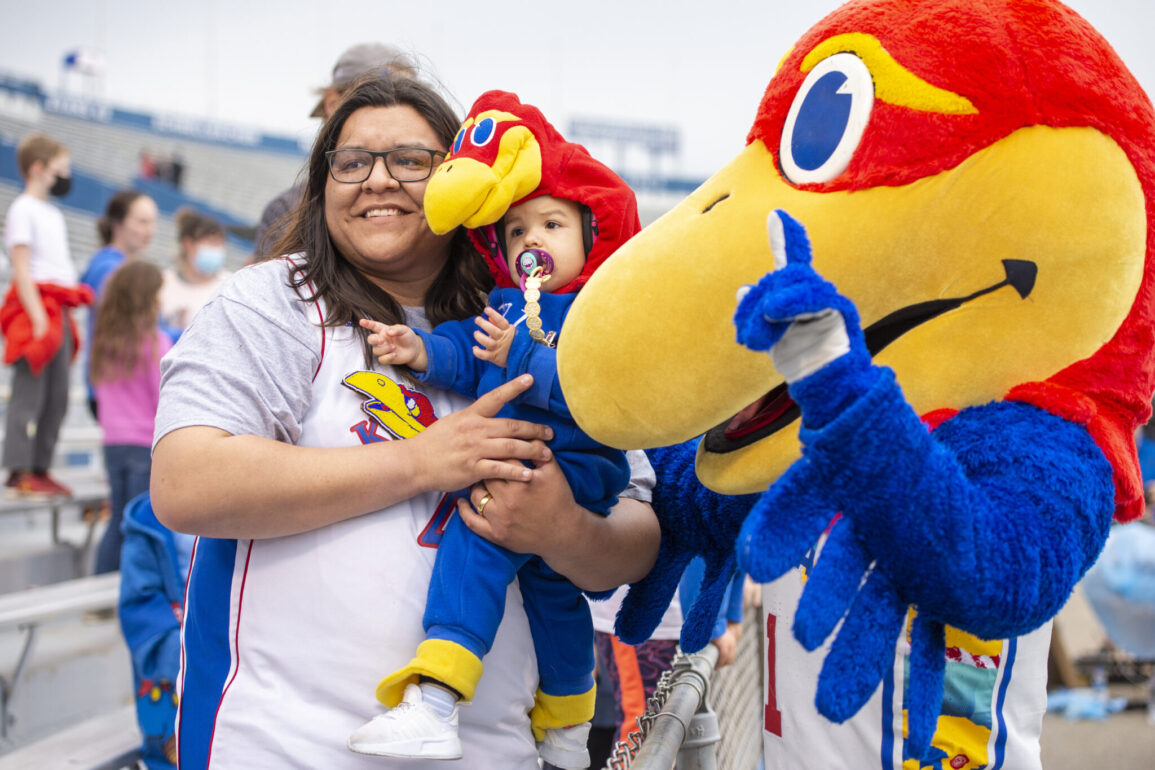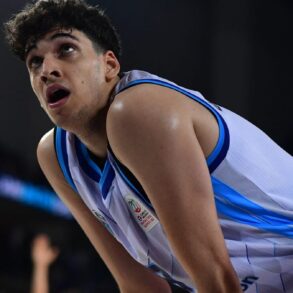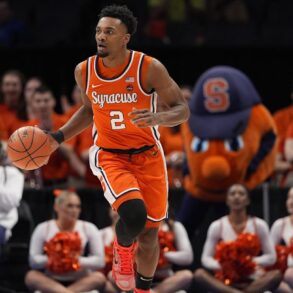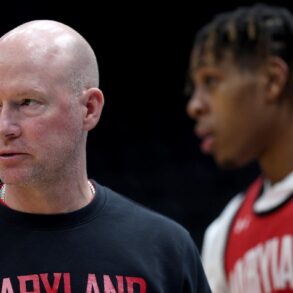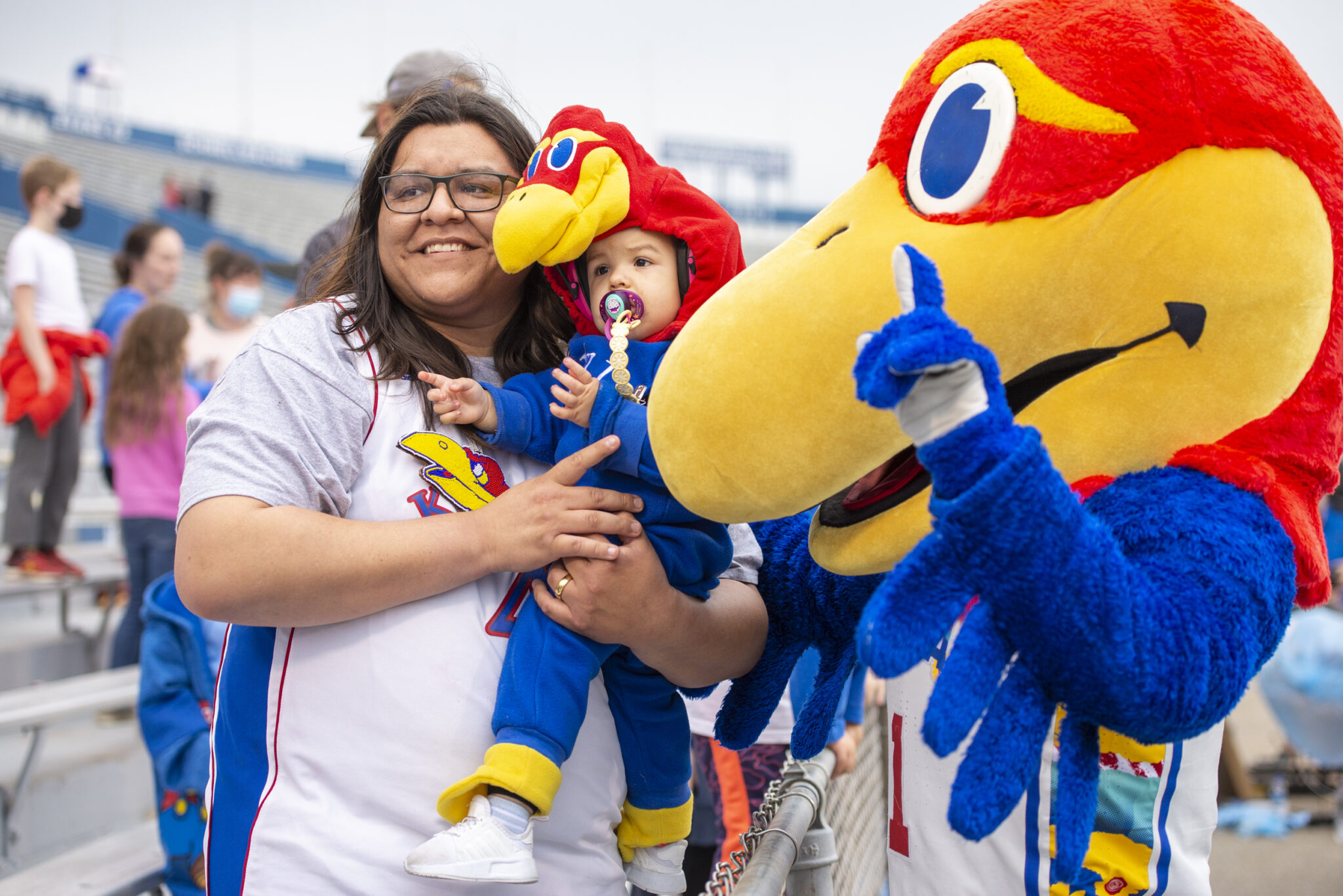
If you talked to a college sports fan in Kansas over the past few years, you likely heard their frustrations: the transfer portal, 25-year-old quarterbacks still using COVID eligibility, the possibility of fading Blue Blood dynasties, conference realignment and student athletes getting paid more than their instructors.
This academic year seemed particularly sour and chaotic.
To help me find context, I sat down with Mit Winter, a former college basketball player who now works as a Kansas-City area lawyer specializing in the legal issues of college sports. Winter has been named by legal groups and sports media outlets as a leading expert, especially in matters surrounding athlete compensation.
He also happens to be my friend, since our sons shared Leawood schools, athletic teams and neighborhood playgrounds.
Below is a transcript of our conversation, edited for space and clarity.
Where do you feel like we are in terms of the seismic changes that have happened in college sports? Can you give me the 30,000 foot view?
For as long as college athletics had been around, with a few like exceptions and maybe like under-the-table payments, college athletes could not be paid beyond a valuable scholarship. Since July 1, 2021, college athletes have been able to receive the NIL compensation, so payment for the use of their name, image and likeness in connection with some activity.
But that quickly morphed into payments that are called NIL payments but everyone knows the athletes are being paid to play a sport at a school
What’s supposed to happen in a month on July 1, is the schools are now just going to be directly paying the athletes NIL compensation.
Again, it’s still called NIL compensation, but really, in reality, they’re being paid to play their sport, right? They’re just calling it NIL compensation now because they don’t want them to be considered employees. So that’s really the biggest difference. Athletes are being recruited and enticed to come to a university with the promise of being paid beyond a scholarship.
Do you feel these last four years are coming to the end of a chapter on July 1? Do you feel like this is an interregnum period that’s ending?
Yeah, I would say it’s a transition. It’s another milestone, but it’s not going to be the ending place. But I don’t think that’s where ultimately it will land with schools paying NIL compensation to the athletes. I think eventually, at some point, we should be talking about — the highest level of football and basketball — probably some athletes are going to end up being employees.
What has been the reaction from the legislature in the state of Kansas to this?
Kansas is unique because it’s one of a few states that has not passed any state law specific to college athlete NIL compensation. When California passed its law, a lot of other states started passing their own laws. Kansas has never passed one. There have been some bills introduced, but they’ve never passed one, which doesn’t mean that college athletes in Kansas cannot receive NIL compensation.
You don’t need a state law. Kansas has been able to float along and change as things around the nation change, without having to have a (state) law.
There have been some states where in 2020 or so, they passed a state law. They ended up being more restrictive than what was put in place by the NCAA eventually on July 1, 2021. Then they quickly either amended their law or repealed their state NIL law. So Kansas hasn’t had to deal with any of that, so they just had the flexibility to sit out there and not have any restrictions.
How do you think we are going to remember these couple years of college athletics when we look back at it? What do you think is going to be the legacy of this moment?
I think people will probably look back at it and it’ll be a time when there’s the ultimate free market in college athletics. For the past four years, boosters have been able to pay athletes as much as they want in NIL compensation to attract them to their school. And right now we’re in this period where they’re trying to bring more regulation to it, and no one really knows how this regulation is going to go.
I think people will look back at this time, the past four years, as the messy beginning of college athletes being paid for college sports, and there was not very much regulation. You could kind of do whatever you wanted.
Now we’re moving into the more regulation space, and eventually we’ll get to real stability and more robust regulation.
And you think that robust regulation looks more like an employment model eventually?
For some athletes, I think that’s where it will end up. In the NBA, NFL and lots of other pro sports, the regulatory structure exists and is not subject to antitrust law challenges because it was collectively bargained between the players associations under US law.
When rules like that are collectively bargained, it makes an exemption from antitrust law. So that’s why you’re able to have things like salary caps, minimum salaries, maximum salaries, even the draft. All that stuff would otherwise violate antitrust law if it wasn’t collectively bargained between the players and leagues.
So I think we’ll eventually end up with some sort of structure like that, at least in some college sports.
I’m sure that you hear fans saying that this fan experience stinks. Do you think this is kind of a low point for the college sports fan experience? Do you predict that it’s gonna get even more messy?
I think the biggest issue that fans have in college sports now is not necessarily the athletes are being paid. It’s about how easy it is for them to hop around from team to team.
What fans have the biggest issue with is they don’t know who’s going to be on their team from year to year. And as a college sports fan, a lot of people like to know a guy who would come in as a freshman, see him get better as a sophomore, junior, senior and graduate, and have their senior night. You got to know the players.
Now, I think a lot of fans feel like players are just mercenaries looking at who’s going to pay them the most. They don’t have any loyalty to their school or even much connection to their schools, and the fans don’t feel like they get to know them.
You could have (rules about transferring) with a collective bargaining model.
Or the other way to do some of this stuff — what the NCAA and conferences are trying to do now — is get Congress to pass a law that gives them an antitrust exemption, (to allow them to) put in rules (about transferring).
How does the weather look for each of those things?
They’ve been trying to get Congress to pass a law for at least five, six years, and there hasn’t been much progress there. A bill’s never even gotten out of a committee.
On the collective bargaining side, that’s still a ways off too, because under the current state of law, we have to have employees. And college athletes are not currently employees. And no university has stuck their neck out there to say we’re going to treat our athletes as employees.
In what ways do you feel like this current landscape is flawed or unjust at the moment?
There really needs to be some agent regulation in the college articles world. If you talk about NBA or NFL — to be an agent in those sports, you have to be registered with the players associations. You have to have certain minimum levels of education and pass certification tests, and you’re subjecting yourself to regulation by those players associations. In college athletics that does not exist. ‘
So there are lots of people who are now NIL agents who have zero experience as an agent. That doesn’t mean that necessarily they’re not good at what they do, but there are still some people out in the college sports agent world who don’t necessarily have the best interests of a lot of the athletes at heart. So I think that is potentially, like the biggest issue I see right now and then,
We were used to seeing powerhouse teams that were underwritten by generations of boosters that would hold up a particular college football program or college basketball program for decades. Now it seems easier to swoop in and install like an incredible set of players and all of a sudden they win. Do you think that has a corrosive effect?
It has brought more parity college athletics, as you just described. There have been the “blue bloods” in college athletics, and they have had this built-in advantage, just because they have the historical success and capital and the boosters that provide financial support. They couldn’t pay players — at least not above board.
For other schools that maybe didn’t have that historical capital, it was hard for them to compete. Well, now if they want to compete, they can just say, “All right, we’re going to pay you more than this other school even if they’re a blue blood.”
So I think it creates more parity in terms of teams that have a chance to be competitive.
I think we’ve seen some instances of schools that are blue bloods that have lost some of that built-in cache. You can say KU basketball the last two years.
Do you think (your children’s) college athletic experience would look distinguishably different from what your college athletic experience looked like?
Definitely a lot different. I think the biggest difference is just the continuity of your teammates. There were definitely a few kids at William and Mary who transferred out or transferred in on my team, but not at the level that you see now.
I had the same roommate for four years in college with another guy on the basketball team. And lots of other teammates were there with me for four years or three years, if they were a year below me. We’re still friends to this day.
The biggest difference is continuity.
And then there definitely are some college athletes who are very focused on, “how much money can I make? Where’s the school that’s gonna pay me the most?”
Everybody’s circumstances are different, and you can’t say you’re wrong for doing that. For a lot of people, being a college athlete is gonna be their most marketable time as an athlete and their time to monetize that. They are making a lot of money for universities and coaches and commissioners. So I can’t begrudge college athletes for thinking that way.
So I can imagine a fan of college sports saying that we need to get lawyers and courts out of college sports. It just should be more pure than this. How would you respond to the argument that having courts and lawyers involved is only muddying everything.
I would say I agree with him. That’s why I’m an advocate of a model that has collective bargaining like you see in the pros. That’s the way to bring stability and certainty of the rules to college sports without all these lawsuits continuing to happen. I agree with the fans.
It’s just a question of how we can get there, and right now, a lot of people in college sports are just hoping that Congress helps them and not working on this other solution. So I think everyone’s on the same page with that sentiment — the fan’s sentiment. It’s just, how do we get to that place?
Eric Thomas teaches visual journalism and photojournalism at the William Allen White School of Journalism and Mass Communication at the University of Kansas in Lawrence. Through its opinion section, Kansas Reflector works to amplify the voices of people who are affected by public policies or excluded from public debate. Find information, including how to submit your own commentary, here.
This post was originally published on this site be sure to check out more of their content.




